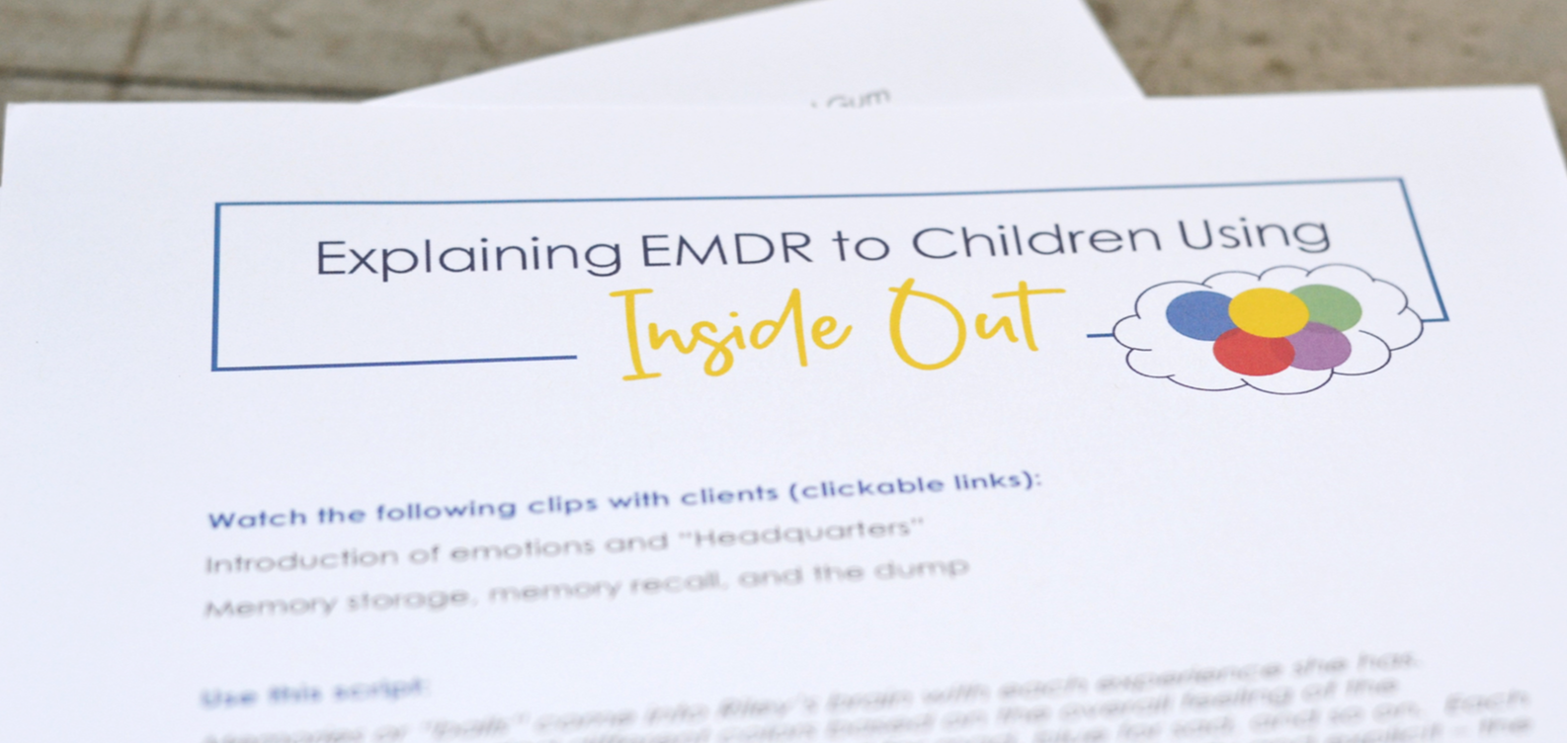|
You love EMDR and learned so much in your basic training! But...there was a lot packed into those intensive training days. You probably have a binder or a manual, tons of handouts, and some practice under your belt.
Maybe you are struggling to pull it all together and get a hang of the basic protocol whether it was two weeks or two years since your basic training. Maybe you are even struggling to start with your first client. Or mayyyybe you are a pro at it and can do all 8 phases with your eyes closed...metaphorically of course! Either way, for a lot of clinicians, even ones who are really confident in carrying out the protocol with adults, doing this work with children seems overwhelming and maybe a bit scary. Or terrifying. I meet many clinicians who have an apprehension for diving into this work with children, even if they have been doing it consistently with adults. AND it is so great to name that and acknowledge it, because if you are going into the session anxious, nervous, and not quite sure what to do - your clients will feel that. It will be a neuroception of danger and they will be on high alert too. Not so great for trauma work. If they know you feel anxious, children might have a harder time staying in their window of tolerance. Bottom line - if you're not quite sure about it, they won’t be either. SO because of this and knowing how transformational EMDR can be for children, one of my most favorite things to do is to support clinicians in getting confident and prepared to engage in EMDR with children. Getting a clear idea of just how to adapt the protocol to be developmentally friendly for children, so you can be confident to rock an excellent EMDR session! If you're looking for resources to get you started I talk HERE about what you need to know about children and trauma work. If you are wondering if young people are really ready for trauma work you can read more about that HERE! You can dive deeper into how to incorporate books and play into EMDR HERE. But, if we start at the very beginning one of the first things we are doing with young people in Phase 2 is giving psychoeducation about EMDR. There are definitely a lot of ways to do this and I find it is a balance between overwhelming clients with neuroscience vs. providing them enough information about how their body and brain stores trauma. I find that when young people can fully understand just what is happening in their bodies they are more likely to have a stronger buy-in for the EMDR process. BUT you don’t want to send them into an all out snooze fest where their eyes are glazing over. The solution? Super fun metaphors and some video clips! I like to talk about EMDR using the movie Inside Out. This is a movie that is ripe with scenes that we can watch and apply to how our brain processes trauma and what we are setting out to do with EMDR. You want in? Swipe my script HERE for how I talk to young people about EMDR in an interactive way using the movie Inside Out! And...if you want to know more about trauma, EMDR, and children check out my training on Playing Through Phase 2: Combining Bibliotherapy and Play Therapy for Phase 2 of EMDR.
0 Comments
Leave a Reply. |
Hi, there!I'm Ann Meehan, an LPCC, Loading... Archives
July 2024
Categories
All
|
Privacy Policies | Terms of Use | Disclaimer
Contact
[email protected] | Copyright Meehan Mental Health Services 2022
Contact
[email protected] | Copyright Meehan Mental Health Services 2022





